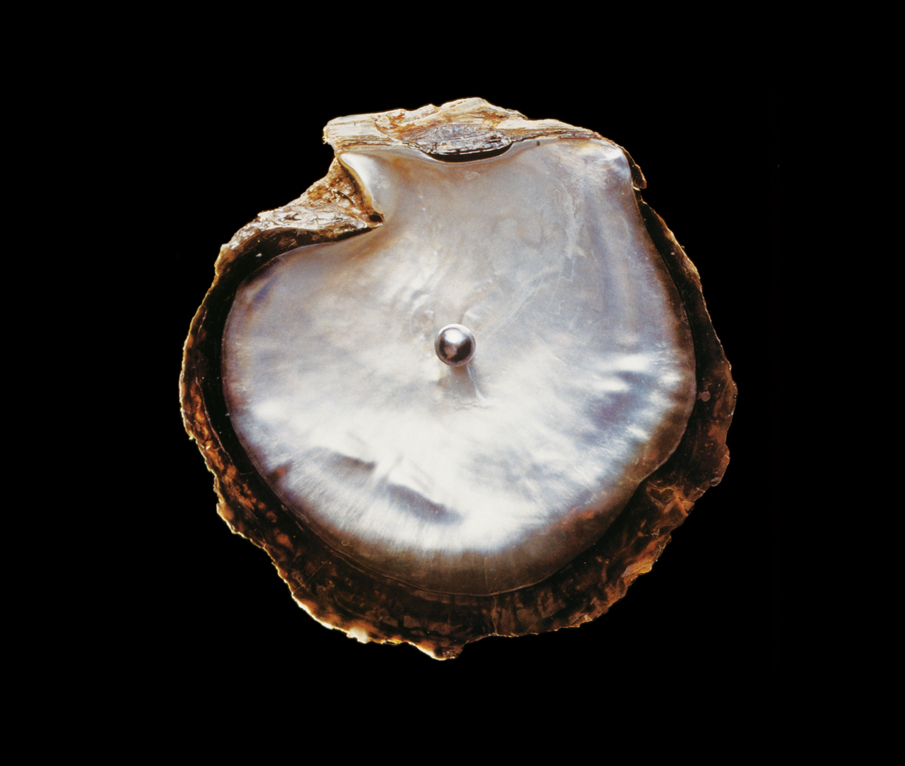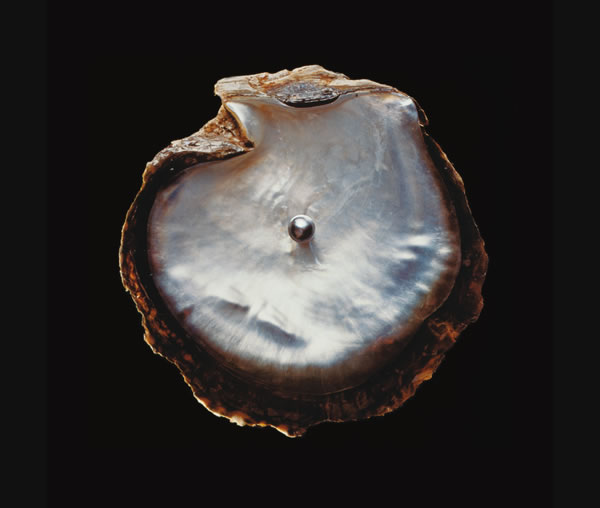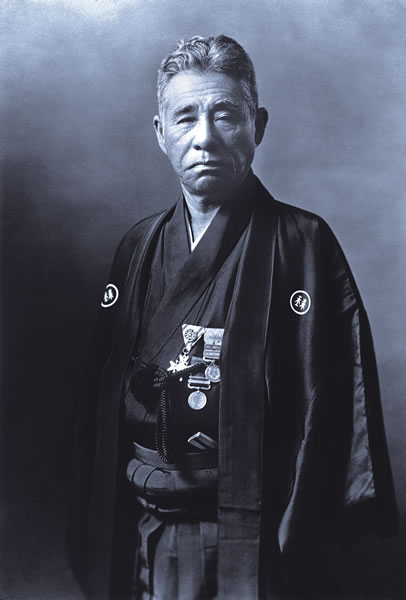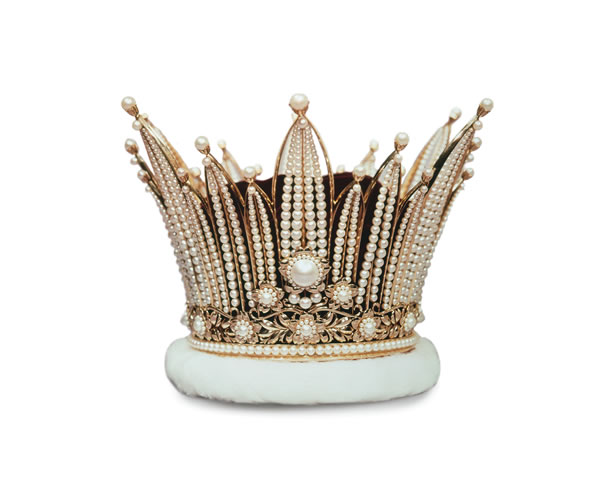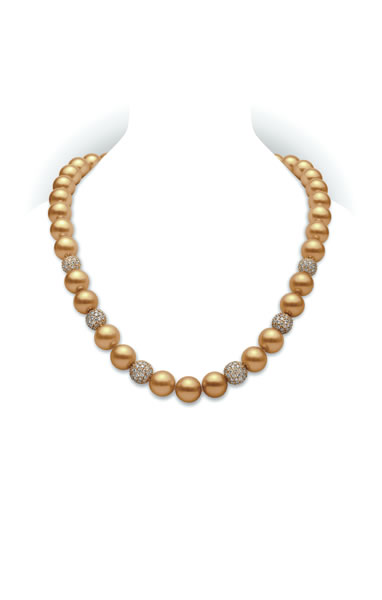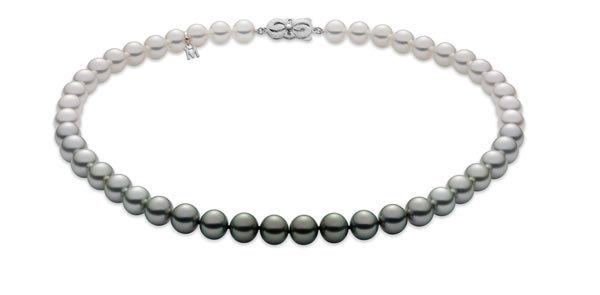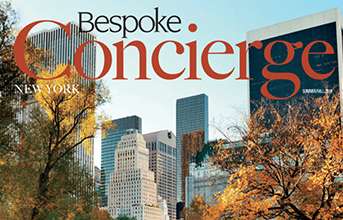Mikimoto revolutionized the oldest gem known in history—the pearl—and transformed it into one of fashion’s most classic and revered accessories.
By Lois Elfman
The instant pearls are gracefully draped around a woman’s neck or hung delicately from the ears, the wearer takes on an air of refinement. Often used as a metaphor for something precious and rare, the pearl is the definition of modern elegance and timelessness, and over the years, the name of one iconic jeweler has become synonymous with this classic gem: Mikimoto.
Today, Mikimoto, the design house that helped build the legacy of the cultured pearl from the ocean up, is regarded as the world leader in pearls. In fact, every jewelry house that designs and sells pearl jewelry, in a sense, has a connection to Mikimoto—without founder Kokichi Mikimoto’s vision for marketing his cultured pearls there would be no classic strand of perfectly symmetrical pearls.
“The woman who craves the very best in life can truly appreciate the heritage and purity of Mikimoto pearls,” says jewelry and fashion stylist Shaye Strager.
Less than a decade after Japan opened to the Western world, Kokichi Mikimoto was born in the town of Toba on the country’s Shima Peninsula in 1858. The international trade and social change in the early 1850s set the stage for his later interactions with different cultures that led to the development and success of the Mikimoto pearl business.
Natural pearls, although rare, were highly sought after, and because of their inherent value they were gathered without regard for preservation. Each year resources were further and further depleted, so Mikimoto set to discover a means of growing pearls within protected oyster beds. For nearly 15 years he experimented with different methods of introducing a particle into the flesh of an oyster to stimulate development of a lustrous pearl.
A fascinating cultivation process takes place before a pearl can be conceived, where the oyster bed must be nurtured, beginning with a core (or a nucleus). In natural pearls, this is simply a fragment of shell, fish bone or sand that floats into the shell of a pearl oyster. To protect itself from this irritant, the oyster secretes thousands of layers of nacre, forming a pearl.
On July 11, 1893, Mikimoto’s dream was finally realized: He had discovered the secret to cultivating beautiful pearls equal in quality to natural pearls. In his system, Mikimoto duplicated the natural process that occurs in the oyster bed by implanting a nucleus. The method he developed is still used by Mikimoto today to form beautiful, lustrous pearls, and in 1896 he was granted his first patent.
By 1899, he opened the first Mikimoto pearl boutique in Tokyo’s fashionable Ginza shopping district, and soon the West came calling. Within a few years there were Mikimoto stores in Paris, London and other major cities.
“Kokichi Mikimoto was not only a great inventor but also a great marketer of his time,” says Meyer Hoffman, chief operating officer of Mikimoto America Co. “When communication was not as easily widespread as it is today, he traveled the globe to let the world know of his great discovery.”
As a pioneer in the cultured pearl industry, Mikimoto has also been lauded for the building of the Meguro factory, which was the first factory in Japan to make pearl jewelry on a commercial scale.
“The quantity of pearls was vastly increased, making genuine pearls available and affordable to a much wider audience,” says Elyse Karlin, an author, curator and co-director of the Association for the Study of Jewelry and Related Arts. “The availability of pearls opened the way for more innovative designs.”
Regalia Collection
While today’s tastemakers and pearl lovers alike appreciate the brand’s classic take on the gem, the more contemporary pieces, such as the Regalia collection from Mikimoto, have been more than welcomed.
In October 2012, Mikimoto debuted the 13-piece Regalia collection in celebration of the company’s heritage. Mikimoto’s most skilled designers and artisans spent two years exploring the brand’s archives in pursuit of pieces symbolic of its history. Each one-of-a-kind, handcrafted piece—necklaces, bracelets, earrings and rings—was inspired by customized jewelry made throughout Mikimoto’s history for women of nobility.
“Each piece tells its own story of the person and event for which it was originally designed,” Hoffman says.
Mikimoto Regalia includes lustrous white South Sea cultured pearls and diamonds set in 18-karat white gold to complement the intricately designed detailing.
“Early on, Mikimoto recognized the need to keep track of styles in Europe and the United States and adjusted its line accordingly,” Karlin says. “I believe this new line brings Mikimoto along the cutting edge with high-end jewelry created around the world in exciting, contemporary styles.
“The line is quite beautiful and mixed with diamonds; the all-white jewelry in some ways is reminiscent of late Art Deco jewelry and at the same time is fresh, new, eye catching and elegant,” she adds.
Strager describes the Regalia collection as a beautiful tribute and homage to Mikimoto history, as the collection has found a way to combine interesting elements of diamond and white gold to enhance the natural beauty of the pearls.
“The Baroque shapes showcase the house’s ability to change with the times yet remain a classic and elite source of cultured pearl jewelry,” Strager says. “I find the beauty of the Regalia collection lies in Mikimoto’s devotion to Baroque pearls and their natural shapes. Very few of us are the perfect size, so I relate to pearls that are imperfect yet still flawless in their luster and genetic makeup.”
Yoshio Sato, chief creative director of Mikimoto, says that his goal for the company is to bring the superior craftsmanship of its pearls to people all over the world. He began this venture more than a decade ago, when he began a collaboration with renowned Italian jewelry designer Giovanna Broggian on the Milano collection.
The Milano collection, which melds Mikimoto’s classic elegance with Broggian’s innovative and exotic designs, centers each distinctive piece on a white, black or golden South Sea cultured pearl.
“Mikimoto designers work tirelessly to create jewels that emanate a feeling of classic elegance,” Hoffman says. “Elegance at Mikimoto means preserving our legendary heritage, while adapting and remaining relevant to today’s discerning clientele.”
The pearls in the Milano collection are truly the focal point of the jewelry piece, thanks to an exclusive spring tension system that holds them in place.
“Each piece is individually made and finished by hand, a luxury that very few manufacturers can provide,” Hoffman says.
As in the Regalia and Milano collections, Mikimoto recognized the organic beauty of the pearl and sought to preserve its aesthetic, rather than trying to constantly change it according to fashion trends.
“We have managed to stay timeless by infusing our traditional sensibilities with modern techniques,” Sato says.
Classic Standards
“Pearl strands are not as basic as they may seem,” says Amanda Gizzi, spokeswoman for the Jewelry Information Center, the consumer education arm of Jewelers of America. “Adding different length strands to a jewelry collection allows for versatility and layering opportunities.”
As favorite pearl necklaces or jewelry pieces are often passed onto daughters or granddaughters, jewelry consultant and stylist Meeling Wong refers to Mikimoto as the “heirloom brand.”
“[Mikimoto] is for anyone who wants to be assured of quality and to own a piece she can pass on to her children,” she says.
What keeps Mikimoto at the forefront of pearl jewelry is its attention to quality. Hoffman notes that only three to five pearls out of every 100 harvested are deemed worthy to carry the Mikimoto name. To prove this point, in 1935, Mikimoto intentionally burned a pile of low-quality pearls to establish the standards of excellence the company was founded on. These standards remain unchanged today.
“Mikimoto jewelry is timeless, elegant and refined,” says fashion designer and stylist Sophia Banks-Coloma. “You can make a perfectly chic statement with any of the pieces. They have a subtle, delicate beauty that is hard to match in any other way.”
And now with Mikimoto’s more contemporary pieces that incorporate other gems—diamonds, rubies, emeralds and sapphires—as well as different colors, the opportunities to style these pearls are endless.
Contemporary Styles
An extremely popular trend in pearl jewelry right now is colored pearls, and Mikimoto is on the forefront of such designs.
“Colored pearls have become more fashionable and popular, especially black and gold pearls,” Wong says. “A single strand of black pearls is the ultimate accessory.”
Banks-Coloma says she’s always looking for jewelry and fashions as unique and beautiful as the women she’s dressing, and colored pearls fit that desire perfectly. Pearls even make a great statement when she’s styling fashion shows.
“Depending on the pearl, their glow can pick up other colors and play off wardrobes and bring an outfit to life,” Gizzi adds.
Mikimoto’s classic pieces also make a statement, whether combined with other pieces of jewelry or on their own.
“Fashion is at a point where mixing everything is not only acceptable, but admired,” Banks-Coloma says. “Generally, you only want to mix two materials so that you still keep the polished look of the pearls. As the pearls will most likely be a statement, match everything else to them.”
Strager advises that mixing pearls with diamonds or colored stones shows personality and individual style. “I like mixing and matching pearls with different colors of gold—a rose gold, yellow gold and white gold stack of bangles with pearls,” she says.
Wong refers to a historical style inspiration extraordinaire. “I’d recommend layering strand[s] of pearls with gold chains a la Coco Chanel for a casual, sophisticated look, or clasp a gold, diamond or gemstone brooch on a pearl necklace/choker for a dressier occasion,” she says.
For pearl pieces that are staples in any jewelry wardrobe, Gizzi suggests a pair of pearl stud earrings or an elegant pair of pearl drops. When wearing the drop earrings, Banks-Coloma recommends wearing hair back in a low bun to really highlight them. To highlight a Mikimoto ring, stick with a simple clutch purse with a chain to carry over the shoulder and not distract from the jewelry.
“For a younger person, I’d think any piece from Mikimoto’s Pearls in Motion collection would be very versatile,” Wong says. “A pair of pearl stud earrings worn with a black turtleneck sweater is so chic and elegant.”
For any sense of style, one thing is clear: Beautiful pearls are meant to be showcased.
“Mikimoto creates jewelry for the confident, modern, elegant woman who reveres our pearls as the timeless original,” Hoffman says. “Mikimoto jewels express both a feeling of contemporary design as well as a timeless elegance—a perfect balance of tradition and innovation.

